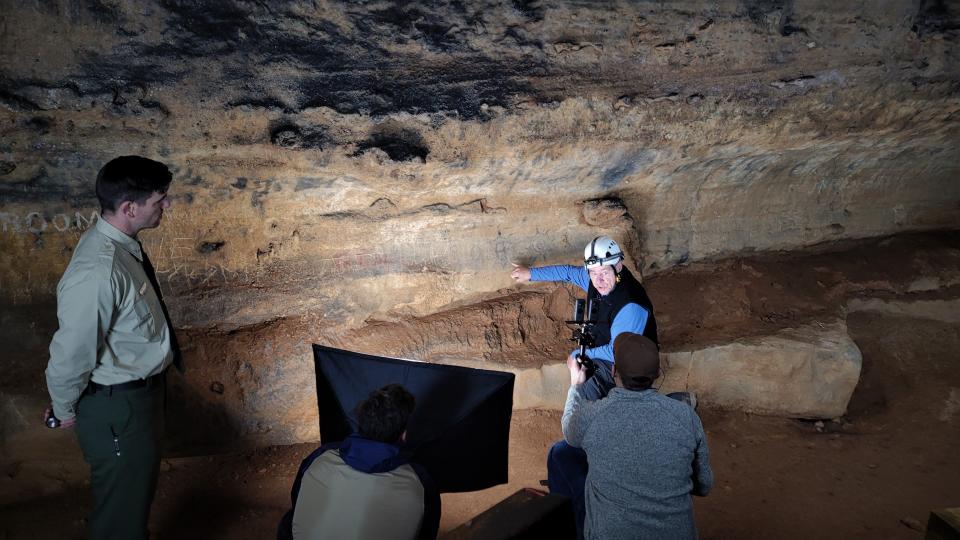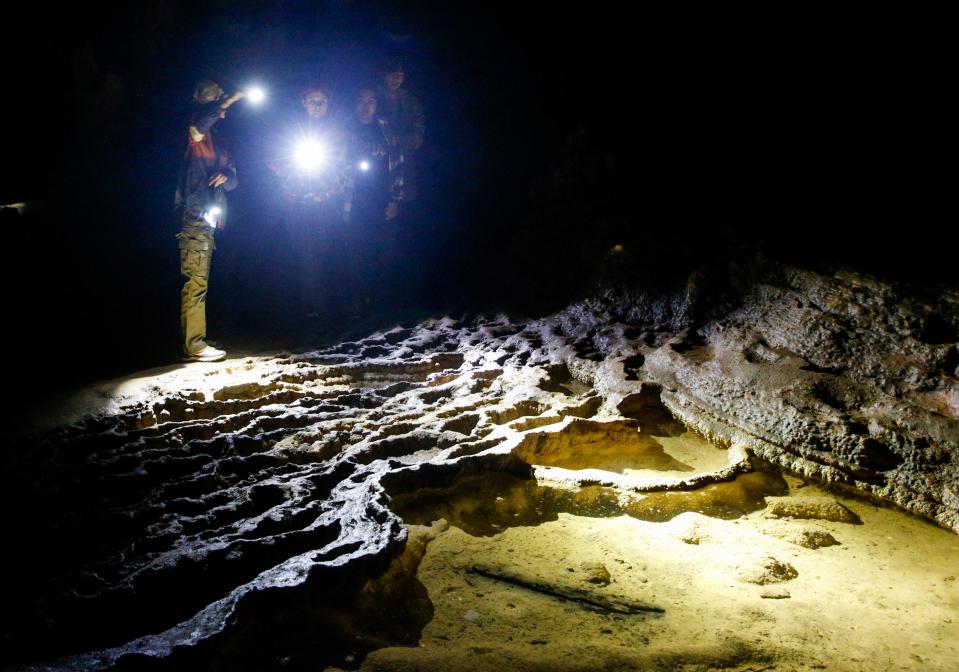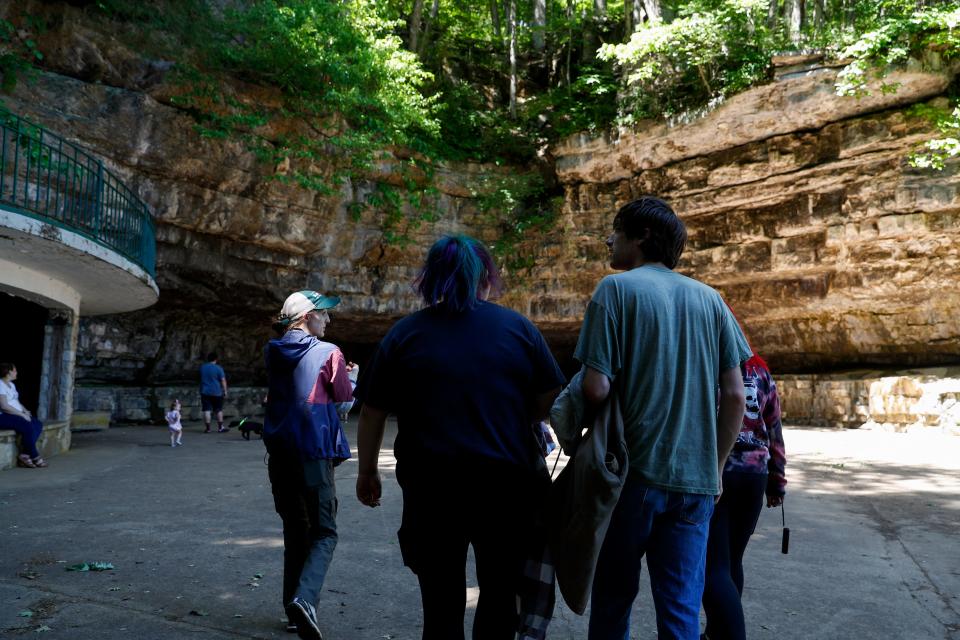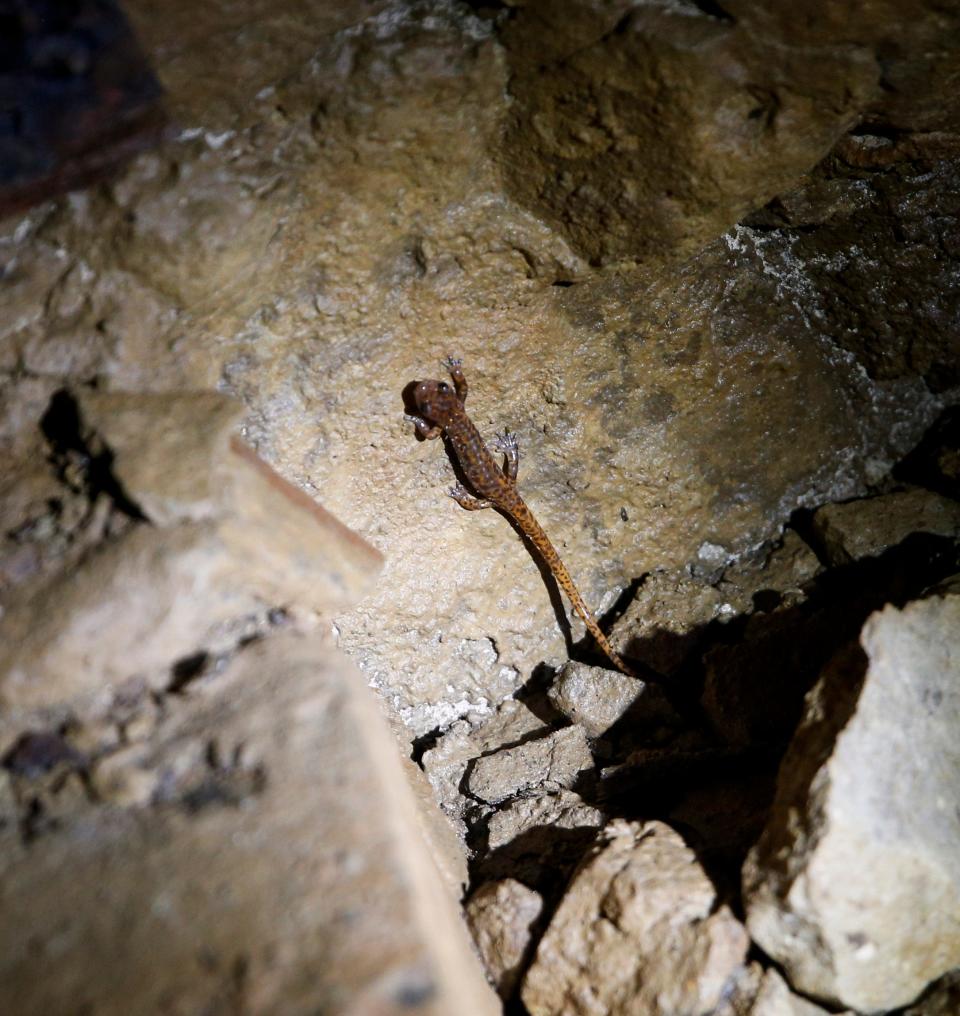Native American culture on display in Clarksville's Dunbar Cave charcoal drawings
Clarksville’s Dunbar Cave State Park is home to historical charcoal drawings of a Mississippian culture of Native Americans who lived in the area 1,000 years ago.
The drawings as well as other aspects of the cave will soon take center stage in a virtual tour that's currently under production and expected to be completed and offered to the public next year.

Adam Neblett, a park ranger for Dunbar Cave State Park, said the drawings, discovered in 2005, are unique to Clarksville. Historians discovered them by accident as they were attempting to document historical graffiti in the cave.
“Dunbar Cave is the only place in the world where the public can see Native American cave art,” Neblett said. “Everything we do here at the park goes back to not only protecting the artwork but telling the stories, not only about what we believe they mean but also the people that created them."
The park is still learning each day about the drawings as more information about Mississippian culture is discovered.

Neblett said the park has worked thoroughly with Native American tribes like the Eastern Band of Cherokee in an effort to learn more about that culture, something which no longer exists.
Because of the evolution of knowledge, Neblett said guests can tour, then revisit a year later and get different interpretations or information about the same drawings.
Charcoal drawings unique to Dunbar Cave
The 40 charcoal drawings inside Dunbar Cave sit about 200 yards from its entrance.
They depict what the park believes to be religious icons and mythical beings of Mississippian culture. Most of the drawings are located on a single wall, Neblett said.
“We don’t really know exactly what they mean, but based on the opinion of the archeologists that work with the drawings, (it is believed) they are religious icons,” Neblett said.

The Mississippian culture dates back 1,000 to 500 years ago.
Carbon dating on the drawings and torch fragments date the charcoal paintings inside the cave to around 700 years ago, with carbon tests estimating the drawings from 1350 A.D., plus or minus 50 years, Neblett said.
Dunbar Cave may have been the perfect canvas for the Mississippian culture who saw caves as portals to the spirit world to a realm of supernatural creatures and monsters as part of their afterlife journey.

The charcoal images bathe the walls of Dunbar Cave and guests visiting the cave can see them while taking a guided tour of the historic cave. Guides serve as interpreters to the public, explaining the images, made up of celestial events and mythical beings to the public.
When the drawings were discovered, information was sent to University of Tennessee professor Jan Simek, who did the research and carbon dating on the drawings to verify their authenticity.
After discovering the artwork, Neblett said the cave tours took on a new focus, one that centered around the historic drawings in the heart of Clarksville.
Reach reporter Craig Shoup at 419-559-7582 or by email at cshoup@gannett.com and on Twitter @Craig_Shoup. To support his work, sign up for a digital subscription to TheLeafChronicle.com.
This article originally appeared on Clarksville Leaf-Chronicle: Native American culture on display in Clarksville's Dunbar Cave charcoal drawings

